how are work and energy related explain the work-energy theorem
Examples are energy stored in a pile driver at the top of its path or energy. Work is said to be done whenever the force is applied to an object then the object is moved to a certain distance.
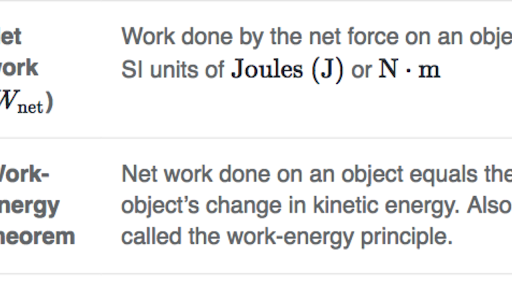
Work Energy Theorem Review Article Khan Academy
F is the final kinetic energy and K.

. Work done by an object can be mathematically expressed as. It basically says when you do work you either add or you remove the kinetic energy from the body. This explanation can be extended to rigid bodies by describing the work of rotational kinetic energy and torque.
W net work done. You might get tired if you keep standing for a long time. Energy is ability to do work.
Work W - when a force causes displacement of an object. Work and energy are directly proportional to each other. The result based on Newtons laws that the net work done on an object is equal to its change in kinetic energy kinetic energy.
Concepts of work kinetic energy and potential energy are discussed. Equal to one half times mass times the square of the velocity of an object. Where W is the work done by object measured using Joules.
Learn about the definition and application of the work-energy theorem. These directionless quantities such as kinetic energy are called scalars. The work-energy theorem also known as the principle of work and kinetic energy states that the total work done by the sum of all the forces acting on a particle is equal to the change in the kinetic energy of that particle.
O is the original kinetic energy. According to this theorem when an object slows down its final kinetic energy is less than its initial kinetic energy the change in its kinetic energy is negative and so is the net work done on it. The net work Wnet is the work done by the net force acting on an object.
So according to the theorem statement we can define the work-energy theorem as follows. According to this theorem the net work done on a body is equal to change in kinetic energy of the body. K f K i W.
If an object speeds up the net work done on it is positive. Where K f Final kinetic energy. Therefore we first need to determine the cars kinetic energy at the moment of braking using.
K f K i W. If there is no displacement there is no work done. It is a known fact that we all require Energy in order to Work.
Now we will see the theorem that relates them. In this lab we will test the work energy theorem using. The work-energy theorem states that the net work done by the external forces on an object is equal to the change in kinetic energy of the object.
This definition can be extended to rigid bodies by defining the work of the torque and rotational kinetic energy. So negative work removes kinetic energy from the body. Translational kinetic energy is distinct from rotational kinetic energy which is considered later In equation form the.
ΔK change in kinetic energy of the object. Where W work done in joules J and. Therefore the change in the cars kinetic energy is equal to the work done by the frictional force of the cars brakes.
The work-energy theorem relates the net work done of forces on an object and the change in the kinetic energy of the object. We apply the work-energy theorem. If you dont do work at.
To perform work energy has to be spent. The measurement of work and energy with the same unit reinforces the idea that work and energy are related and can be converted into one another. K i Initial kinetic energy.
The work-energy theorem also known as the principle of work and kinetic energy states that the total work done by the sum of all the forces acting on a particle is equal to the change in the kinetic energy of that particle. The joule J is the metric unit of measurement for both work and energy. The Work-energy theorem explains the reasons behind this Physics of no work.
The work-energy theorem affirms that the work done on any object is comparable to the difference in kinetic energy of the object. When calculating the net work you must include all the forces that act on an object. The translational kinetic energy of an object of mass m moving at speed v is KE 1 2mv2.
So the above equation follows the law of conservation of energy according. Work done on an object transfers energy to the object. The quantity 1 2mv2 in the work-energy theorem is defined to be the translational kinetic energy KE of a mass m moving at a speed v.
This is known as Work-Energy Theorem. W 1 2 m v f 2 1 2 m v i 2. 10 N 10 kgms 2 so 10 J 10 kgm 2 s 2.
When the displacement and the force applied are in an opposite direction. It is expressed as. If K represents the change in kinetic energy of the body and W represents the work done on it.
W net K. We know that all the cars kinetic energy is lost to friction. Where K f Final kinetic energy.
The work-energy theorem states that the net work Wnet on a system changes its kinetic energy Wnet 1 2mv2 1 2mv02. These concepts are combined with the work-energy theorem to provide a convenient means of analyzing an object or system of objects moving between an initial and final state. This relationship is called the workenergy theorem.
It can be represented as. 10 J 10 Nm the units of force multiplied by distance. This establishes a relation between work and kinetic energy which is called the Work-Energy Theorem.
Potential energy also referred to as stored energy is the ability of a system to do work due to its position or internal structure. Work relates to displacement and displacement relates to kinetic energy. And this is crudely speaking what we call the work-energy theorem.
Work is equal to an objects change in kinetic energy. Work-energy theorem - this theorem states that the work done on an object will either add kinetic energy to an object or take kinetic energy away. The work-energy theorem states that the change in the kinetic energy is equal to the amount of work done.
M is the mass of the object measured using kilograms. The energy an object has by reason of its motion equal to latexfrac12textmv2latex for the translational ie non-rotational motion of an object of mass m moving at speed v. The principle of work and kinetic energy also known as the work-energy theorem states that the work done by the sum of all forces acting on a particle equals the change in the kinetic energy of the particle.
Work is said to be done when an acting force displaces a particle. The Work-Energy Theorem presents a way of dealing with kinematic quantities in mechanics without regard for vector direction. Kinetic energy KE - the energy of motion.
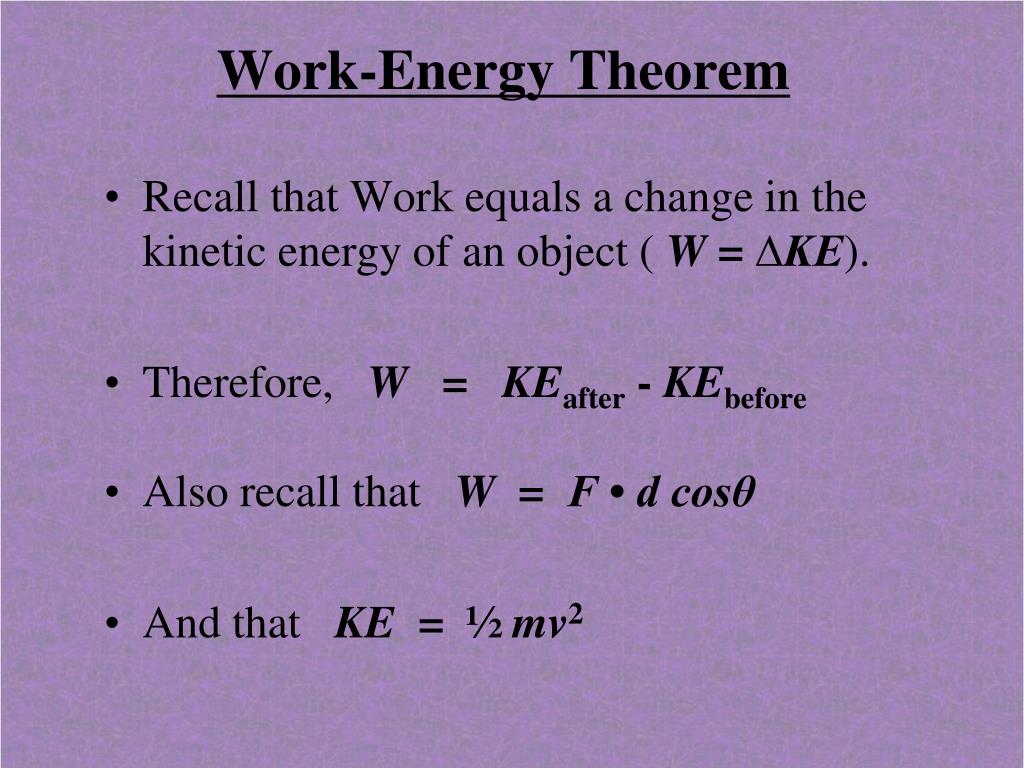
Ppt Work Energy Theorem Powerpoint Presentation Free Download Id 5571805
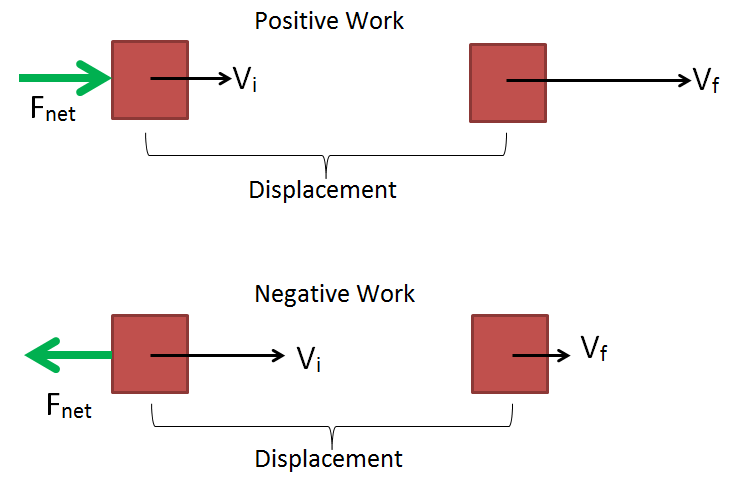
Work Energy Theorem Energy Education

The Work Energy Theorem Objectives Investigate Quantities Using The Work Energy Theorem In Various Situations Calculate Quantities Using The Work Energy Ppt Download

Work Energy Theorem Geeksforgeeks
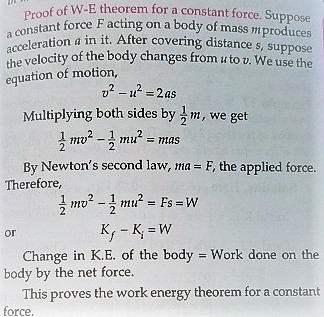
A State And Prove Work Energy Theorem In The Case Of Const Scholr
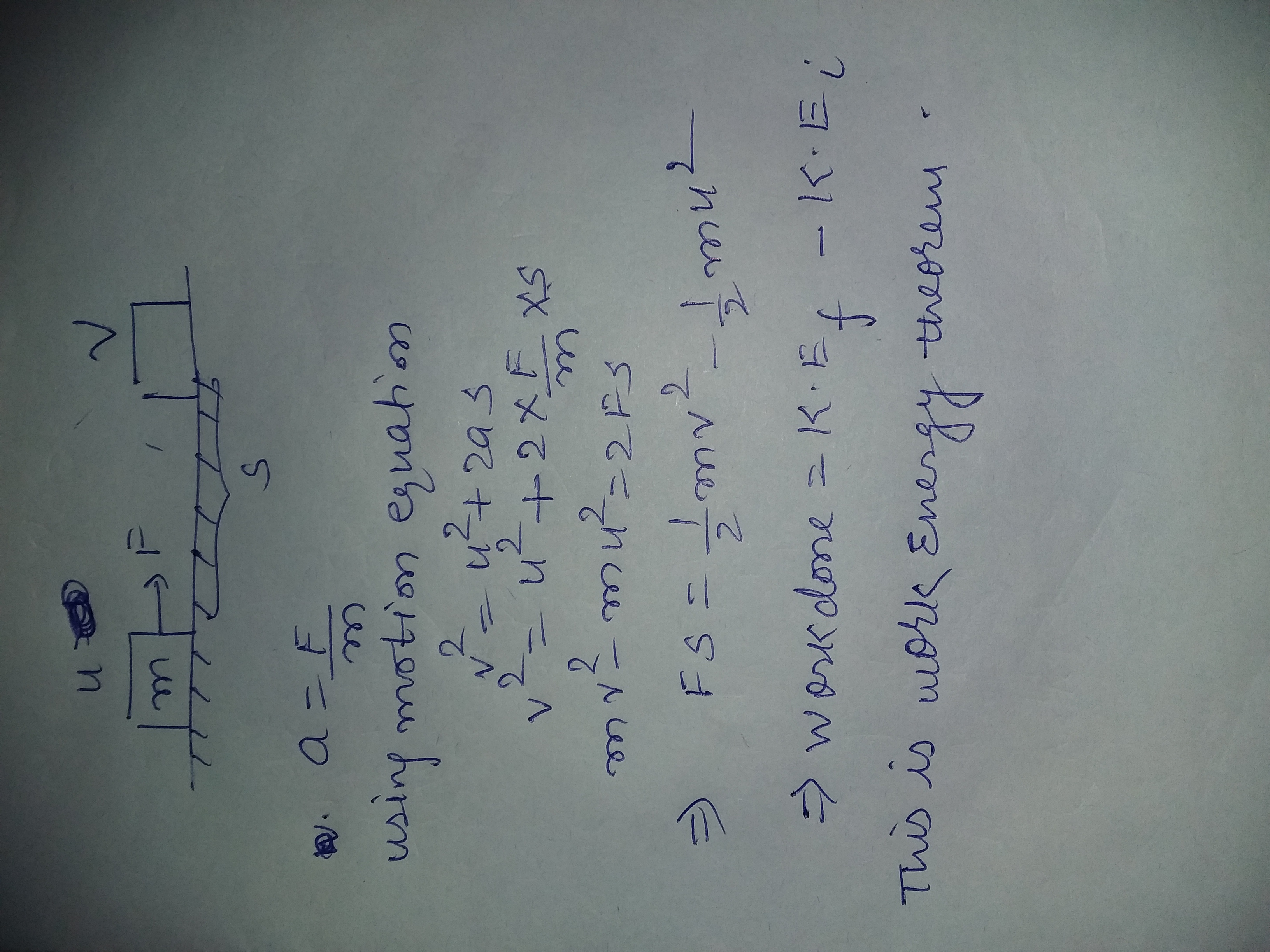
Please Explain Me Work Energy Theorem With Its Proof Physics Topperlearning Com Bxhj4pii

Work Energy Theorem Work Energy Power 2 In Hindi Youtube

Work Energy And Power Class 11 Notes Physics Chapter 6 Learn Cbse

Nazarin B Nordin What You Will Learn Define Work Power And Energy Potential Energy Kinetic Energy Work Energy Principle Conservation Ppt Download

Work Energy Theorem Variable Force Youtube

Energy Work Power 16 Of 31 Work Energy Principle An Explanation Youtube

Work Energy And Power Basic Introduction Youtube

Kinetic Energy And The Work Energy Theorem Physics

5 3 The Work Energy Theorem Kinetic Energy Ppt Download
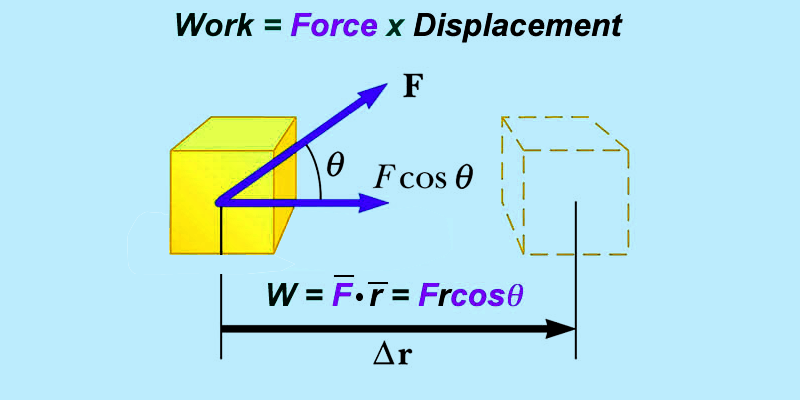
Work And Energy Introduction Principle Of Work And Energy Equations Examples Videos And Faqs

State And Explain Work Energy Principle Em4 23 Engineering Mechanics In Tamil Youtube

Work And The Work Energy Principle Video Khan Academy

